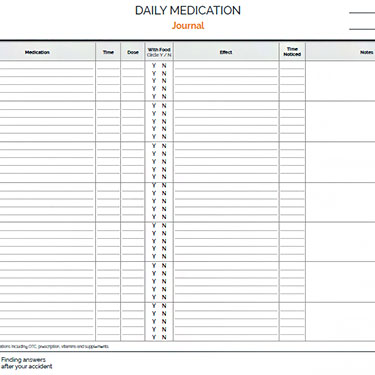
What to do when a defective drug makes you ill or injured - talk to an Arizona attorney
Approximately 4.5 billion prescriptions are filled in the United States every year. Pharmaceutical drugs are intended to make us feel better. But sometimes, a drug makes its way into the marketplace that’s defective, has unreasonably dangerous side effects, or lacks proper warnings.
When bad drugs make their way into people’s medicine cabinets, they can become seriously injured, ill and even die. Legal recourse for individuals injured by pharmaceuticals takes the form of a product liability lawsuit.
Let’s take a closer look at pharmaceutical liability in Arizona.
Types of pharmaceutical liability cases
Pharmaceutical liability cases (sometimes called “bad drug cases”) are a type of product liability case.
There are three categories of pharmaceutical liability cases:
- Defectively manufactured pharmaceuticals
- Defectively designed pharmaceuticals
- Improperly marketed pharmaceuticals
Let’s take a closer look at all 3 of these.
Defectively manufactured pharmaceuticals
A defectively manufactured pharmaceutical drug is one that—though properly designed—left the drug maker in a condition other than they intended. In other words, some error (such as contamination) occurred during the manufacturing process that caused the drug to become unsafe.
Defectively designed pharmaceuticals
A pharmaceutical is defectively designed if the drug is “unreasonably dangerous” to consumers, even when used properly. For example, a pharmaceutical intended to provide headache relief that also causes 1 out of every 3 people to have a heart attack would undoubtedly be “unreasonably dangerous.”
Claims based on defectively designed pharmaceuticals are rare because most unreasonably dangerous drugs aren’t approved by the U.S. Food & Drug Administration (FDA). Nevertheless, innovative drugs can be approved in fewer than 6 months, and some side effects may not be realized until after the drugs are on the market.
Arizona courts are particularly strict when it comes to defectively designed pharmaceutical claims. Historically, Arizona has only allowed such claims in cases where the drug is so dangerous that NO doctor would prescribe it to ANY class of patients.
Improperly marketed pharmaceuticals
A drug’s “marketing” includes the advertisements associated with a drug, as well as the warning label affixed to the drug packaging. To establish that a drug was improperly marketed in Arizona, a plaintiff must prove that the manufacturer had a duty to warn the consumer about a risk and that the failure to do so made the product unreasonably dangerous.
For example, if a drug increases the risk of a miscarriage and the manufacturer failed to provide a warning indicating as much, a woman who suffers a miscarriage after taking the drug may be able to sue the manufacturer.
However, there’s an important caveat in Arizona.
In certain cases, the manufacturer's duty to warn consumers is limited to providing an adequate warning to the prescribing physician who then assumes the duty to pass the necessary information on to the consumer. This is referred to as the learned intermediary doctrine.
In other words, if the manufacturer fails to affix a label warning consumers about the increased risk of a miscarriage, but instead informs your prescribing physician about the risk—and your prescribing physician fails to pass along the information—the manufacturer is off the hook (though you may be able to sue the prescribing physician for medical malpractice).
Common injuries associated with unsafe drugs
There are numerous injuries that a person can sustain from a defective drug. These injuries range from minor to very serious and include:
- Heart failure
- Stroke
- Depression
- Organ failure
- Increased blood pressure
- Headaches
- Acne
- Death
 Medication Log Sheet
Medication Log Sheet
Printable daily medication log template helps you track your medicines and side effects
Download in PDF format![]()
Who can be held liable for unsafe drugs?
Pharmaceutical liability cases are complex and each case has a number of potential defendants. Generally, an attorney will file a lawsuit against all defendants that may have acted improperly and let the defendants argue amongst themselves over who’s ultimately liable to the plaintiff.
Potential defendants include:
- Manufacturers. Drug manufacturers may be held liable for manufacturing defects, design defects, and improper marketing. Drug manufacturers are generally large companies and the lawsuits against them can result in massive judgments.
- Testing laboratory. A drug that injures consumers was likely subject to several tests before reaching the marketplace. It’s possible that one of these testing laboratories made a mistake and the drug should have never reached the marketplace.
- Doctors: It’s possible that a doctor provided inaccurate information about the drug in question.
- Pharmacy: It’s possible the pharmacists made a mistake by misreading the prescription or simply grabbing the wrong drug from the shelf. In such cases, the pharmacy may have some liability.
What elements do you need to prove in a pharmaceutical liability case?
A pharmaceutical liability case can be brought under a theory of negligence or strict liability. Typically, a plaintiff will use the theory of strict liability because it’s easier to prove.
In a pharmaceutical liability case based on negligence, the plaintiff must prove that:
- The defendant owed the plaintiff a duty of reasonable care (manufacturers owe a duty of care to all potential consumers)
- The defendant breached the duty of reasonable care owed to the plaintiff
- The defendant’s breach was the proximate cause of the plaintiff’s injuries
In a pharmaceutical liability case based on strict liability, the plaintiff doesn’t need to prove that the defendant breached any sort of a duty. Rather, the plaintiff only needs to show that:
- A pharmaceutical was sold in an “unreasonably dangerous” condition
- The unreasonably dangerous condition existed at the time the pharmaceutical left the defendant’s control
- The dangerous condition was the proximate cause of the plaintiff’s injuries
Arizona statute of limitations for suing a pharmaceutical company
In most cases, a person must file a pharmaceutical liability case within 2 years of the date from when they were injured. However, if the person was under the age of 18 when the injury occurred, the clock won’t start running until the person turns 18.
What damages are available in a pharmaceutical liability case?
Compensation for pharmaceutical liability injuries aren’t capped in Arizona. Whether a pharmaceutical liability case is brought under the theory of negligence or strict liability, the following damages are available:
- Economic damages (medical expenses, lost income, etc.)
- Non-economic damages (pain and suffering, emotional distress, etc.)
- Punitive damages (in cases where the defendant’s actions were grossly negligent or intentional)
In some pharmaceutical liability cases, punitive damages are NOT available in Arizona. Specifically, punitive damages aren’t available in the following situations:
- The product that allegedly caused the harm was designed, manufactured, packaged, labeled, or sold according to the terms of an approval of a government agency.
- The product complied with all Arizona statutes, rules and regulations.
- The lawsuit is based on a contract provision concerning the product and that provision was authorized or permitted by a government agency
Tweet this
Pharmaceutical liability cases can be incredibly complex. It’s recommended that you speak to an experienced pharmaceutical liability attorney in Arizona to fully understand your options.
List of class action lawsuits for medications
Wondering if a drug you are taking is the subject of a current lawsuit?
See our guide Choosing a personal injury attorney.
